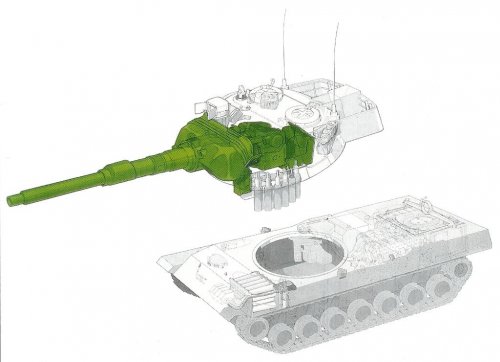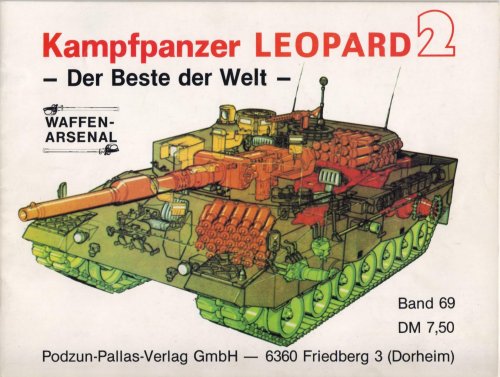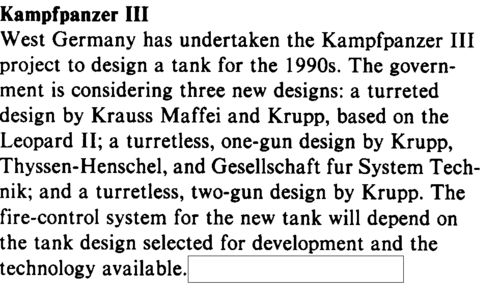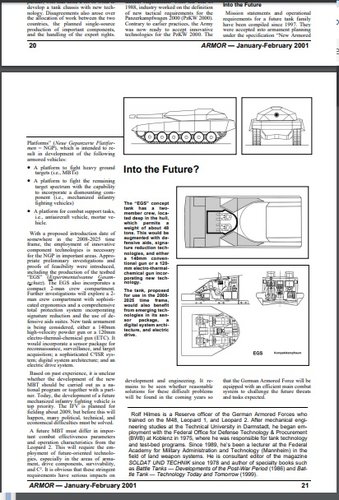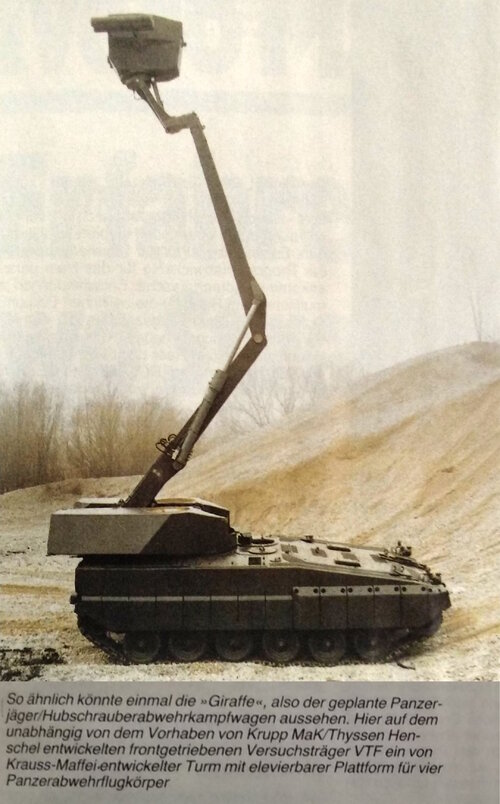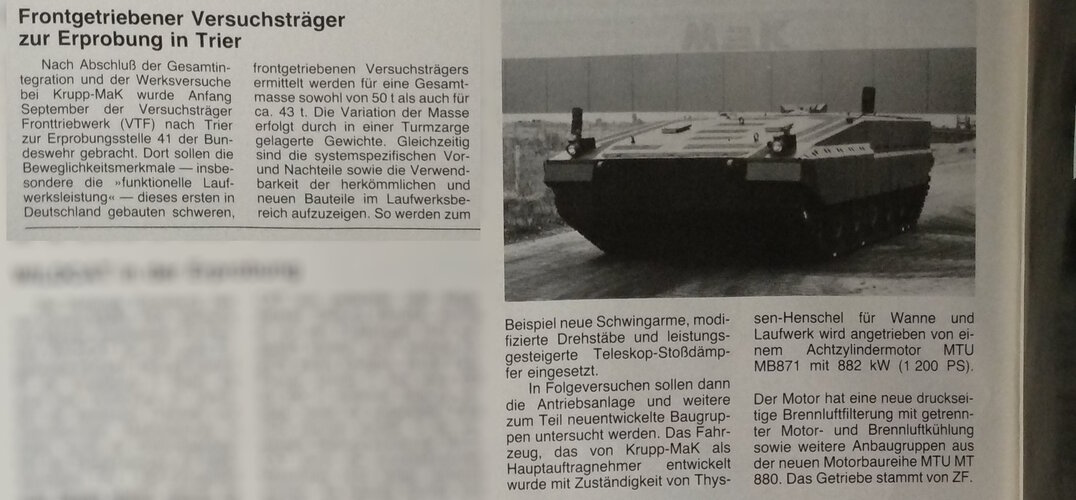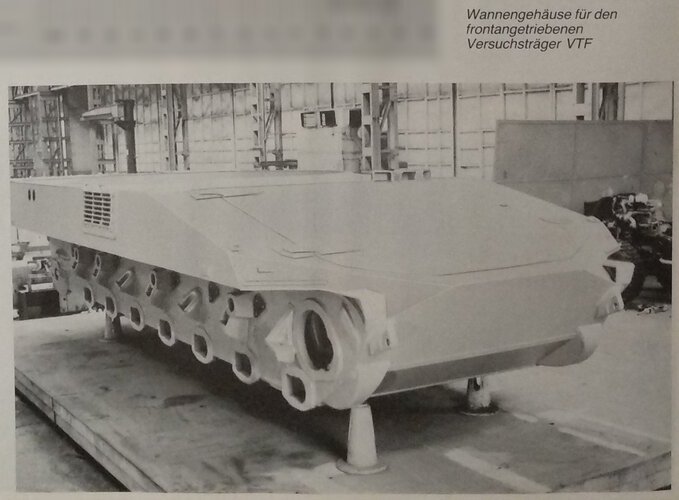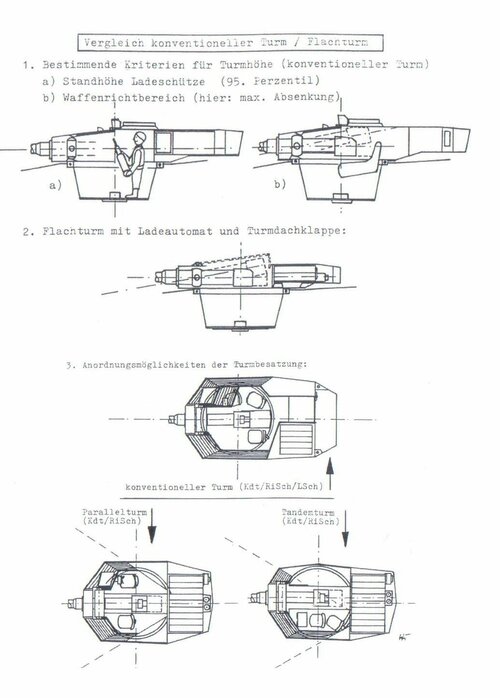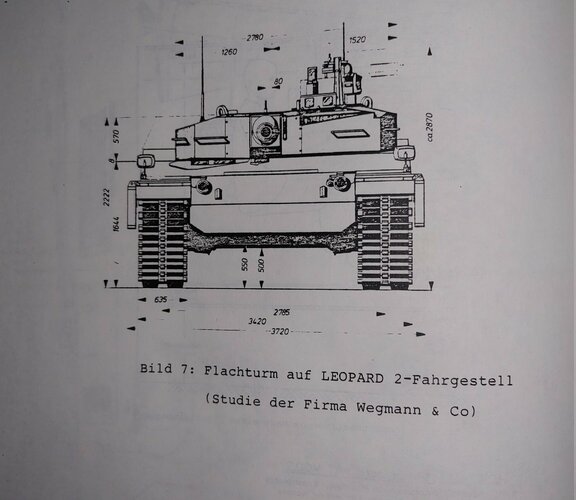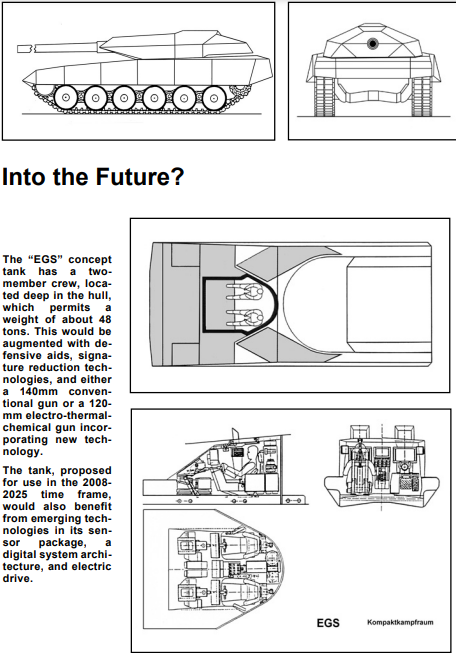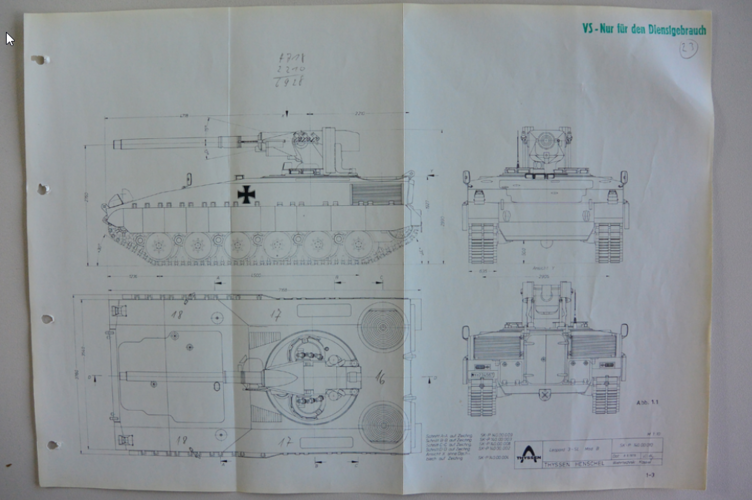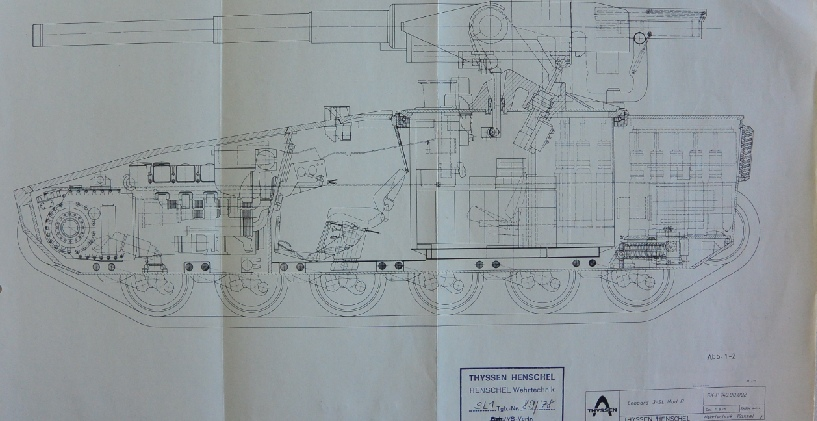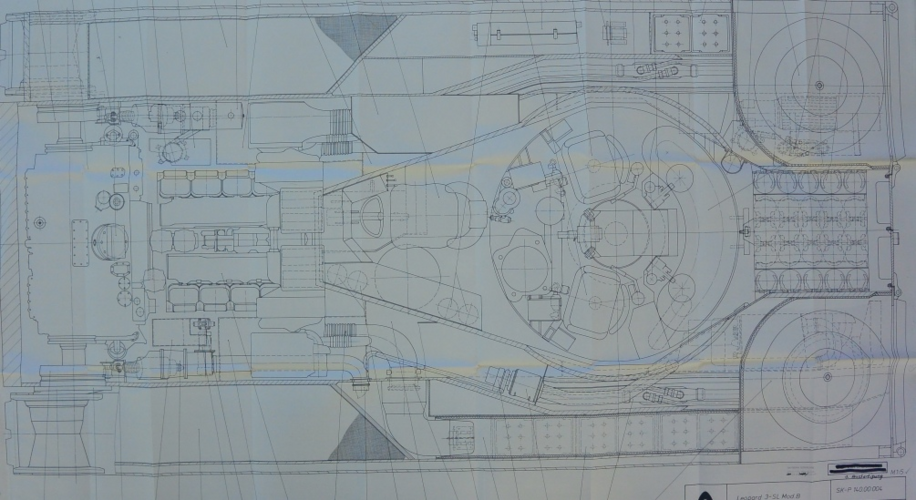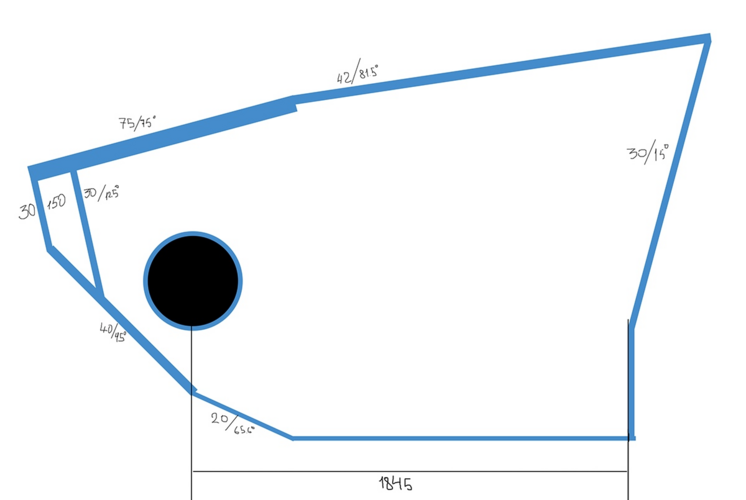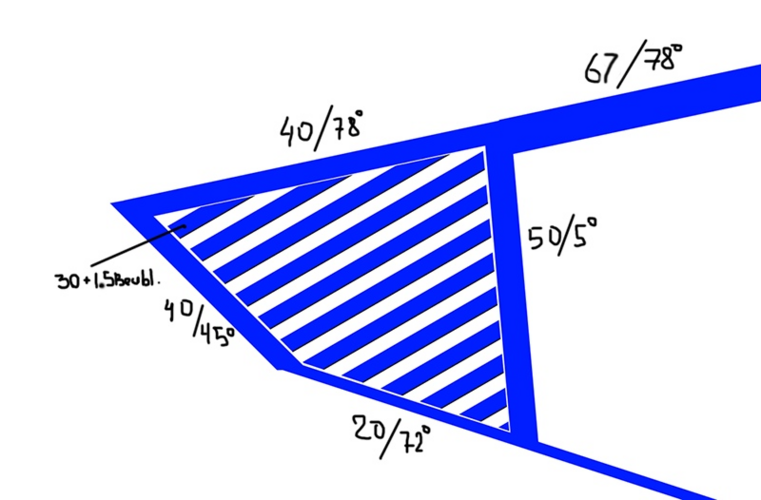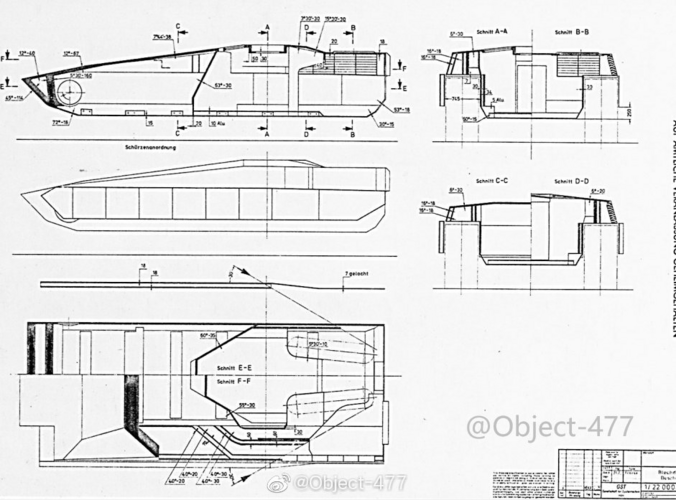At the end of 1977, considerations focused on the low profile turret concept of Wegmann. A moveable hatch in the turret roof allowed a flatter turret design, reducing the height of the turret about 30 percent, which achieved the necessary weight reduction. In studies at the end of 1978, different variants of the low profile turret concept were examined with front- and rear-driven hull concepts (FT mod. 1 - 4).
Another Joint Project Fails
The studies of the low profile turret concepts coincided with the beginning of another French-German tank program (MBT 90), which had the goal of fielding a new tank as successor to MBT Leopard 1 and the French AMX 30, with fielding beginning in the 1990s. Both nations were well aware of the lessons learned from the failure of the earlier joint program. This time, the program was structured carefully and a goal set to reach a joint agreement on important basic requirements before detailing technical problems or building prototypes. In the first phase, joint resolutions were to be achieved in regard to:
• Military requirements for the future main battle tank
• Harmonizing governmental and industrial organization for the joint project
• Timely planning, as well as allocation of the work package and the funding
• The necessary procedures (e.g. evaluation; type of contract, reimbursement of costs etc.)
Some Experimental Concepts
Above, an MBT 70 prototype “kneels” in a demonstration of its unusual variable height suspension. At left, the VT 1-2 prototype, a turretless casemate tank with two 120mm cannons mounted in the hull, undergoes testing at Munster. At lower left, a model of the flat turret technology, which included a roof hatch which could go up at the rear to allow the gun to depress. This feature permitted a flatter turret and lower vehicle height, while saving weight. In the course of the project, cooperation problems arose and their solutions were obviously extraordinarily difficult. France insisted on a weight of MLC 50 (approx. 48 tons) as upper weight limit. And due to budgetary reasons, France also insisted on a 1991 date for first unit fielding. On the other hand, Germany’s procurement budget was tied to the Kampfwagen 90, and sufficient funding was not available before 1996. From the German point of view, there was no significant advance in chassis technology compared to that of the MBT Leopard 2. Therefore, Germany decided in 1980 to use the newly developed low profile turret on a Leopard 2 chassis, an idea that, understandably, drew no approval from the French partner, who had done a lot of work to develop a tank chassis with new technology. Disagreements also arose over the allocation of work between the two countries, the planned single-source production of important components, and the handling of the export rights. At the end of 1982, it was obvious that the second attempt at a French-German joint MBT had failed once again.










